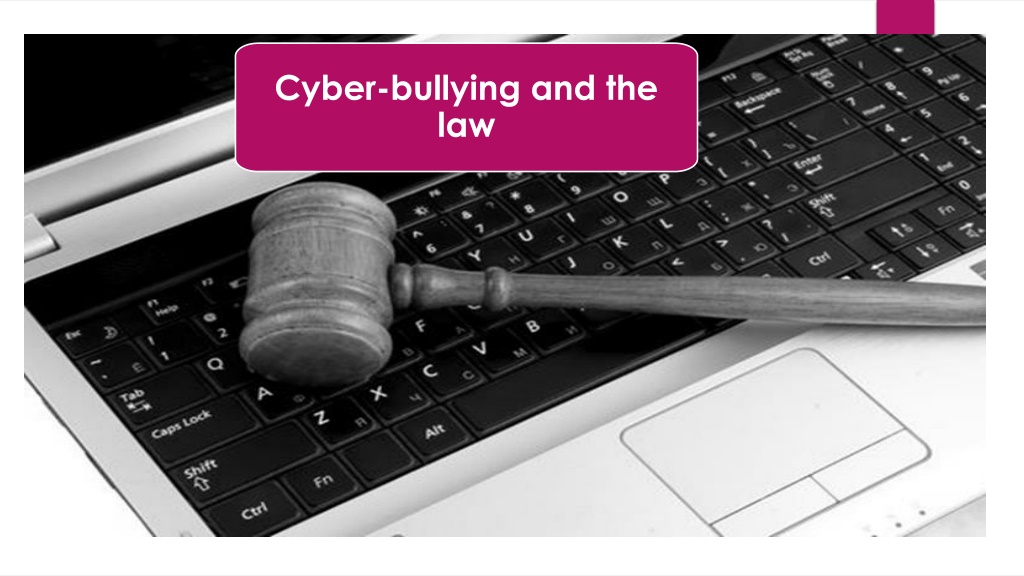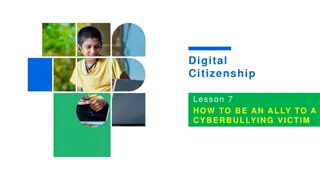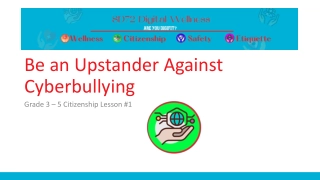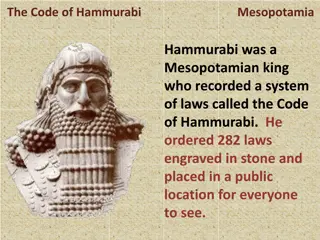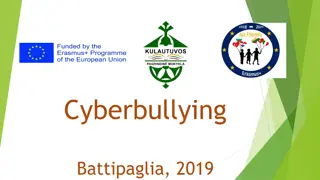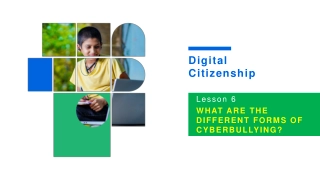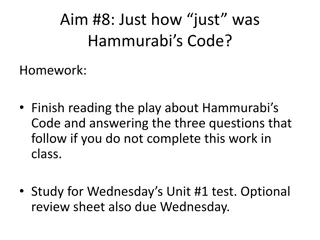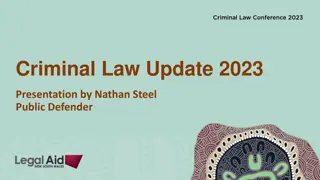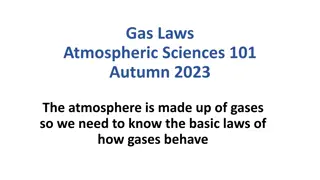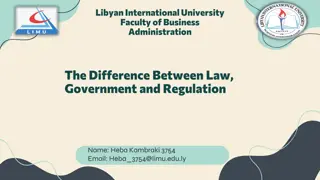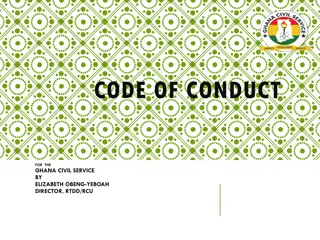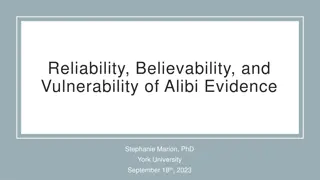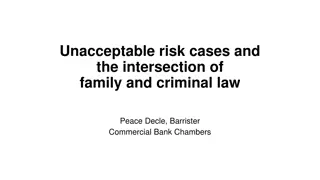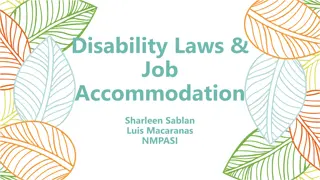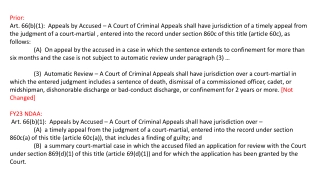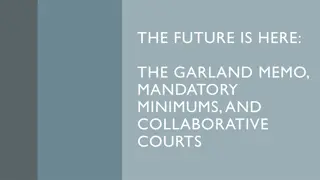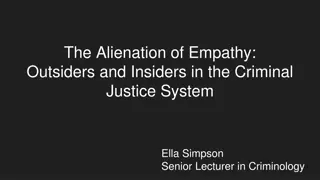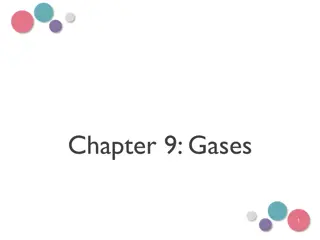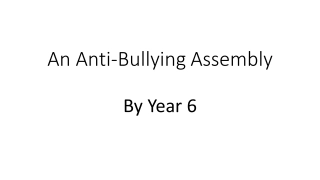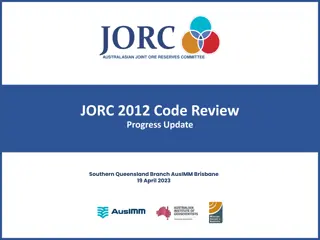Understanding Cyberbullying Laws in Canada's Criminal Code
Discover how cyberbullying crosses legal boundaries in Canada, including offenses such as sharing intimate images without consent, criminal harassment, uttering threats, and more outlined in the Criminal Code.n
Download Presentation
Please find below an Image/Link to download the presentation.
The content on the website is provided AS IS for your information and personal use only. It may not be sold, licensed, or shared on other websites without obtaining consent from the author. Download presentation by click this link. If you encounter any issues during the download, it is possible that the publisher has removed the file from their server.
Presentation Transcript
Cyberbullying as a criminal charge Cyber-bullying only becomes a criminal matter if it falls under Canada s Criminal Code Sharing intimate images without consent s 162.1(1) Criminal harassment s 264(1) Uttering threats s 264.1(1) Intimidation s 423(1) mischief in relation to data (subsection 430(1.1)); unauthorized use of computer (section 342.1); Identity theft s 402.2(1) Extortion s 346(1) Counselling suicide s 241(1) Defamatory libel s 298(1) Public incitement of hatred s 319(1) Child pornography offences (section 163.1); Bullying behavior that amounts to actual attacks on persons or to property may also be caught by a number of provisions including assault (sections 265-273) and theft (sections 322-344)
Criminal harassment Legal definition: Causing another person to fear for their safety and/or those around them repeatedly communicating with, either directly or indirectly, the other person or anyone known to them; engaging in threatening conduct
R. v. Sim, [2017] O.J. No. 5792 Facts Sim created a private Yahoo group which portrayed the complainant in a false and sexually degrading manner The website attracted 1500 members and was dedicated to the degradation and online spreading of the complainant Sim posted extensive biographical details about the complainant with authored false, degrading, grotesque sexual commentary about her on the website and encouraged group members to post their own vile comments and crude sexual fantasies about her The complainant discovered website and provided screenshots to the police Finding Sim was convicted of criminal harassment by "engaging in threatening conduct directed at the other person"
R. v. Elliot, [2016] O.J. No. 310 Facts Elliot was on trial for two counts of criminal harassment heated exchanges on Twitter between Elliot and Guthrie became increasingly heated over a period of 6 months before Guthrie made a police complaint there was an incident where Guthrie was out with friends during which Elliot sent a tweet mentioning their location Guthrie admitted at the same time she was feeling harassed by Elliot she was engaged in several Twitter campaigns to make it clear to Elliot he was harassing women Elliot called Reilly a "bitch" and tweeted about her "fat ass" Finding By using Gunthrie's handle and hashtags, Elliot was at least reckless as to whether or not Guthrie was harassed Guthrie's fear for her safety was genuine but unreasonable- she had no right to expect that Elliot would not send tweets using her hashtags and handle while she continued a campaign to call Elliot out as a man who harassed women there was no evidence of any threats or comments of a sexual nature made by Elliot towards Guthrie Elliot was acquitted on all counts
R. v. Lepp, [2019] O.J. No. 6237 Facts The accused was charged with criminal harassment of Clarke, repeated telecommunication with Clarke to harass, three breaches of recognizance and repeated telecommunication with Solomon to harass The accused sent repeated emails to Clarke and her paralegal Solomon On November 29, 2017 Mr. Lepp emailed Ms. Clarke directly, copying Aurora representatives, reiterating his warning about Ms. Clarke's financial jeopardy if a dog park user were hurt in the park. In this email Mr. Lepp also reiterated his complaint about Ms. Clarke's use of the dog park. He began his email by saying "I am aware that you do not want to hear from me but the fact is you're in charge of the park volunteer committee." Ms. Clarke responded to this email, telling Mr. Lepp to contact Aurora, not her, with dog park issues and stating "Please remove me from your contact list and never text or contact me again. Stop following me and taking pictures of me. It is just down right creepy and disturbing". Clarke made a complaint to police The accused was arrested and released on bail Finding held that accused not guilty of criminal harassment but guilty of repeated telecommunication with Clarke to harass and breaches of recognizance the thrust of Clarke's evidence didn't establish a fear of harm to her ongoing psychological wellbeing so the elements of criminal harassment offence not proven
Defamatory libel Legal definition: publishing matters likely to injure the reputation of someone or expose them to hatred, contempt, ridicule
R. v. Thelwell, [2021] O.J. No. 7373 Facts Thelwell charged with defamatory libel and breach of her recognizance term not to access internet Thelwell posted defamatory material about Stead on various websites that he had sexually assaulted her after a date, that he ghosted and assaulted her and that he is involved in drugs. She posted on a number of different websites with false accusations and stories that he was raping other women, that he was into abusive fetish sex, has a bad temper etc Thelwell was revealing personal information about him and labelling him a terrible person. Stead found these posts about himself on various websites containing accurate personal information and false denigrating statements Stead contacted Ontario police to report posts Finding Thelwell was guilty of defamatory libel by falsely stating in posts that he raped her and her friend and was into abusive fetish sex
Cyberbullying under civil litigation The difference is that civil litigation is focused on compensation (victims can be paid a sum) whilst criminal prosecution is focused on merely punishing the perpetrator. The tort of defamation The tort of invasion of privacy Invade the plaintiff s private affairs or concerns The tort of internet harassment The tort of intentional infliction of mental suffering The test is set out in Prinzo v. Baycrest Centre for Geriatric Care.63 The plaintiff must prove conduct by the defendant that is (1) flagrant and outrageous, (2) calculated to produce harm, and which (3) results in visible and provable illness.
V.M.Y. v. S.H.G., [2019] O.J. No. 6702 Facts: Father had engaged in years of cyber-bullying the mother, making serious allegations on websites, YouTube videos and emails that she is a kidnapper, abuses and drugs the children, forges documents and defrauds governments. These allegations were distributed to friends, family and business relations of the mother, fellow employees, parents, members of the Armenian community and her church The wife testified that she sought medical assistance from the family doctor as a result of the father s conduct because she was having nightmares, was feeling ill and undergoing mental stress Judgement: Justice Kristjanson found the conduct to be intentional, flagrant, and outrageous and stated at 177 that the conduct caused a visible and provable illness Mother was awarded damages for intentional infliction of mental suffering, invasion of privacy and punitive damages: $50,000 in damages for tort of intentional infliction of mental suffering, $100,000 in damages for tort of invasion of privacy and $150,000 in punitive damages.
E.H. v. O.K., 2018 ONCJ 412 Facts: Father posted nasty and false allegations about mother on the internet. Mother went to court to ask for an order that father shall not post online, through social media or make public any allegations, personal information, court documents, photographs or videos regarding her or the child Judgement: Justice Sherr found at para. 133 that the father had "inappropriately vented about the mother and the court case on social media," and had posted the child's picture publicly on Twitter to solicit funding, a breach of the child's privacy and contrary to her best interests. At 134 Justice Sherr held the Court has authority pursuant to cl 28(1)(c) of the Children s Law Reform Act to make orders sought by the mother and child to prevent the father from making postings and require him to remove existing ones See: C.A.V. v. L.C.M., [2002] O.J. No. 4878 (SCJ).
Clancy v. Farid [2023] O.J. No. 2970 Facts: The defendant was an internet troll who waged an online defamation campaign against 53 plaintiffs. The campaign included cyber harassment, cyber stalking, cyber defamation ultimately resulting in tens of thousands of postings depicting the defendants as sexual predators, fraudsters, criminals etc. publication of thousands of postings with defamatory comments and photos falsely alleging the plaintiffs to have been involved in sex trafficking, rape, pedophilia, workplace harassment etc. Findings: The goals of defamation are to compensate for vindication of reputation, injury to pride and self-confidence, social damage and possible economic damage even if no reputational harm the plaintiff is entitled to damages for emotional distress or annoyance Nominal damages may be awarded where defamation is found, but it did not cause harm to the plaintiffs injured plaintiff not required to show defendant intended to do harm or was careless. General damages are presumed from the publication of a false statement. when assessing general damages in defamation court considers: conduct of the plaintiff plaintiff's position and standing nature and seriousness of defamatory statements mode and extent of publication absence or refusal of any retraction or apology conduct and motive of defendant from publication to judgement any aggravating or mitigating circumstances all of the plaintiffs were awarded damages to various degrees
Stancer Gossin Rose LLP v Atas, [2021] O.J. No. 384 Facts: Atas made online anonymous attacks for many years against 150 individuals regarding two mortgage enforcement proceedings against her, an application to have her declared a vexatious litigant and the termination of her employment for cause in the 1990s Atas made false allegations of criminality and professional misconduct against the individuals and their family members and associates Victims included adverse parties in litigation, her own lawyers, former employer, its successors, owner, manager etc This case concerned four cases against Atas suing for defamation and harassment Findings: The impugned publications were published on the internet and were defamatory and false The publications were intended to harass the people against whom they were targeted On the balance of probabilities Atas published the statements and she did not prove the truth of the statements Held the tort of internet harassment should be recognized because Attas online conduct and publications sought not to defame victims but to harass them. Did not make out claims for invasion of privacy. Title to the postings was vested to the plaintiffs, given orders so they could take steps to have the content removed. A permanent injunction was granted but found there was no utility in ordering a public apology or requiring Atas to remove the offensive content.
